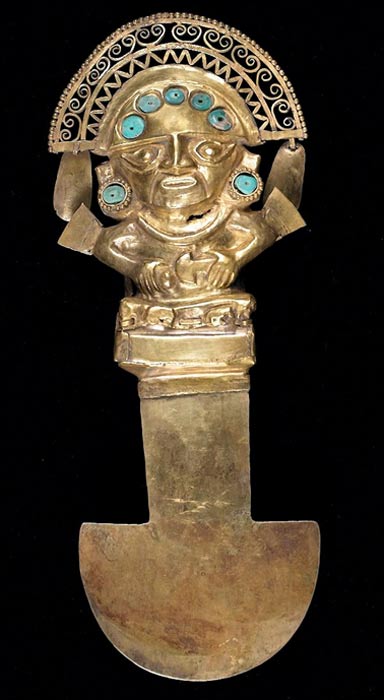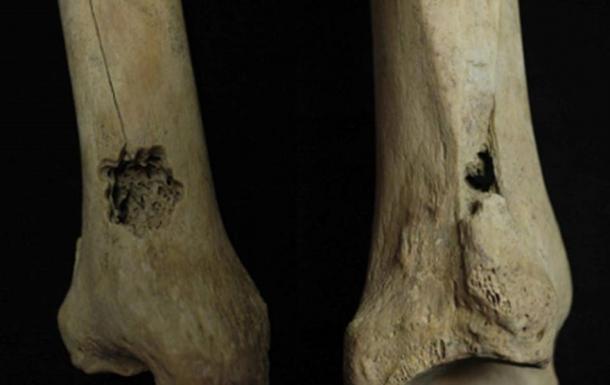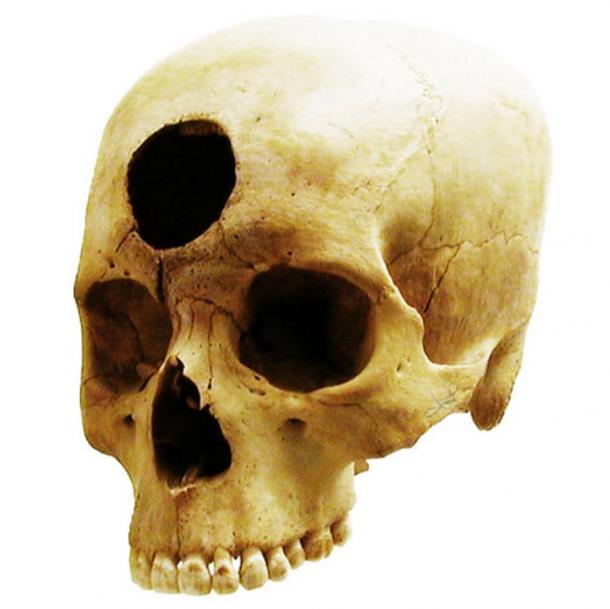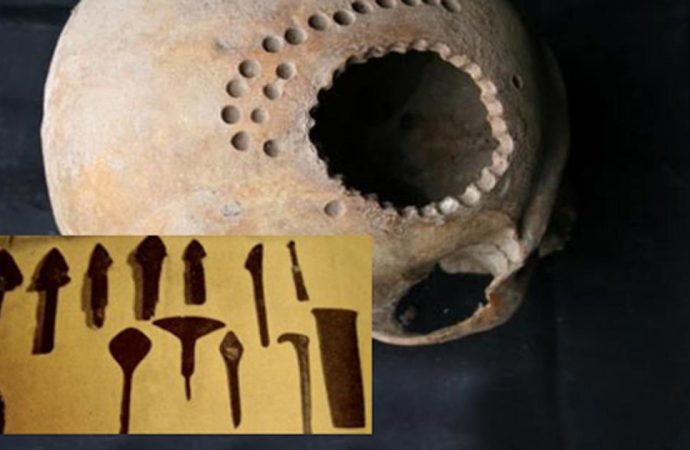A team of archeologists has unearthed a set of slate-stone instruments that are similar to scalpels. The artifacts are 4,000 years old and are believed to have been used by ancient Peruvian healers to make surgical incisions on patients.
According to Manila Bulletin, the artifacts were discovered in the community of Papahuasi, Huanuco, on the left bank of the Huallaga River, 431 km north of Lima in central Peru. The finding reveals that the local Quechua-speaking Yachaq indigenous people practiced medicine. The tools, which closely resemble scalpels, were discovered along with the mummies of 16 adults and children. Their bodies were laid to rest in the fetal position, which according to the beliefs of these people, was a position symbolizing rebirth.

A Peruvian Tumi scalpel. Andean cultures such as the Paracas have used the tumi for the neurological procedure of skull trepanation. Sican Culture Ceremonial Knife (Tumi) held at the Birmingham Museum of Art (public domain)
As Antonio Robles, the curator of the Municipal Museum of History in Churubamba, in the northern Andean province of Huanuco, said:
”Evidence of the practice of medicine among these people is revealed in the practice of cranial perforation and mummification, because to mummify (a body) requires knowledge of medical techniques. You have to know the human body. It’s not just about cutting the corpse of the deceased, but knowing mummification techniques and, obviously, healing techniques. It is evident that the inhabitants of this area practised medicine, (it is) totally unusual, because most of the inhabitants… were farmers, hunters, gatherers and warriors. Finding a town that practised medicine is really interesting, deserving an extensive study”.
The site also contained stone mortars used to grind medicinal plants, and other medical tools. The first significant discoveries related to these people were made 14 years ago by the team led by Yoshio Onuki, a Japanese archeologist who published many precious works about his research. However, the topic of pre-Columbian medicine of Peru isn’t a new topic. As Liz Leafloor from Ancient Origins explained in her article:
”Drilling holes in the head, otherwise known as trepanation, is the earliest surgical technique known. Holes were bored into a patient’s skull in an attempt to relieve physical ailments and mental illness. Researchers have now discovered the first example of the drilling technique used on other body parts in pre-Columbian Peru.
In a study published in the International Journal of Paleopathology, physical anthropologist and professor at University of Central Florida , Dr. J Marla Toyne writes that marks were identified on two skeletons found at the pre-Columbian site of Kuelap, in northeastern Peru. The bones of the individuals, dated to 800–1535 AD, displayed evidence of having undergone drilling techniques on their legs in a manner similar to trepanation. It is thought this was done to treat a possible lower leg infection, and this is a rare find.”

First example of ancient surgical drilling technique on bones which aren’t skulls. Credit: J M Toyne, 2015
Moreover, archaeologists excavating burial caves in the south-central Andean province of Andahuaylas in Peru discovered the remains of 32 individuals dating back to between 750 and 1000 years. Apart from this, the researchers found evidence of 45 separate surgical procedures on the skulls of the individuals.
According to an article by April Holloway, ”cranial surgery, known as trephination, is one of the first ever surgical practices and is known to have begun in the Neolithic era. It involves drilling a hole in the skull of a living person to cure illness such as convulsions, headaches, infections or fractures. Although there is some merit to the technique and it is still practiced today for the relief of subdural haematoma, there is evidence to suggest that in ancient times people believed that illness was caused by a trapped spirit and that drilling a hole would allow the spirit to escape.

A Nazca-Peruvian skull operation from 2000 years ago presumably to relieve a front cavity inflammation. (tsaiproject / flickr)
The skulls found in Peru show evidence that sections of the cranium were removed using a hand drill or a scraping tool, and this was conducted, of course, without the use of modern luxuries like anaesthesia. While some have suggested the skull traumas may have been the result of torture, Kurin explained that some of the remains showed evidence of their hair having been shaved and a herbal remedy placed over the wound, which all point to the fact that this was an attempt to heal sick or injured individuals.”
Source: Ancient Origin

































Leave a Comment
You must be logged in to post a comment.